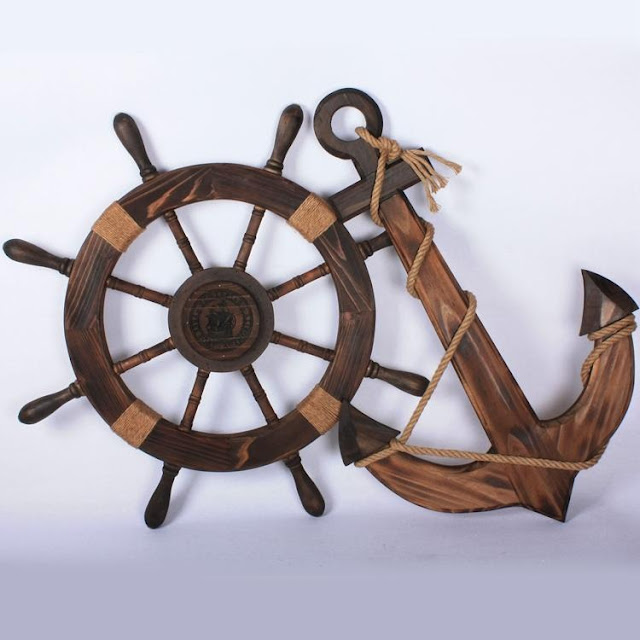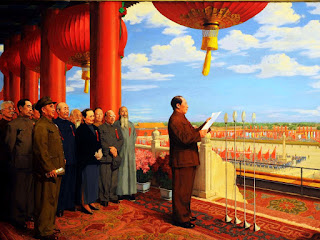Ten Han Dynasty Inventions That Changed the World
In 206 BC, a peasant named Liu Bang established the great Han Empire that would last over 400 years. One of the empire's distinctive attributes was to record and preserve the developments and advances of all aspects of society. There were many inventions in Chinese history, and the following ten innovations from Han Dynasty are among the most important ones.
 |
| Han Dynasty Mural |
- Invention of Paper-making
Paper-making is one of the four greatest inventions of ancient China and an outstanding creation in human civilization. China is the first country in the world that bred silkworms and waved silks. Ancient Chinese often bleached the unqualified cocoons to make the silk. Some remnants would be left on the matting, and more bleaching often resulted in more remnants, which would accumulate into a fibrous sheet layer. When the sheet was dried in the sun, it could be used to write. This was the original paper in China. In 105 (Eastern Han Dynasty), Cai Lun discovered that paper-making could be much easier. He collected the barks, cotton cloth, fishnets, and other materials, and grind, pound, copy and bake them into the paper. This is how modern paper-making was bettered, and the new technique had enabled the pervasiveness of paper in people's lives.
 |
| Paper-making Process |
- Suspension Bridge
According to “The Genius of China” authored by Robert Temple, the suspension bridge already existed in the Han Dynasty. The fact is the very first suspension bridge was invented much earlier. The chronicle Annals of Yanyuan County writes that Li Bing, a local governor, built seven bridges in Yanyuan, and one of them was the Cable Bridge. This may be the earliest bridge somewhat similar to the suspension bridge in Chinese history.
In 50 BC (the fourth year of Han Xuandi’s reign), a hundred-meter-long iron chain bridge was built in Sichuan. A world-famous traveler named Xu Xiake had the bridge included in his travel blog in 1665, and the article was titled with the Records of Iron Chain Bridge. Two years later, a French missionary named Kircher also mentioned another iron chain bridge in Yunnan built in 65 AD. Therefore, Suspension was invented in China and significantly improved in the Han Dynasty.
 |
| Modern Suspension Bridge |
- Deep Drilling
On a brick relief work of a Han Dynasty tomb in Sichuan, the whole water drilling process was painted. People used the drilling technique for mining and engineering. They used a derrick to pump brine through a bamboo pipeline to a distillation furnace and then processed it. Meanwhile, nearby a bronze foundry from Western Han Dynasty in Hebei province, a mining shaft (facilitated with copper extraction inside) about 100m deep (328 feet) was found. There was also a spacious mining area. The shaft and mining equipment were made of wood and irons.
 |
| Deep Drilling |
- Wheelbarrow
Although the wheeled wagon appeared 5000 years ago, the invention of the wheelbarrow was still ambiguous. Luckily, some Han Dynasty reliefs can tell us more. In a Han Dynasty tomb dating back to 118 AD, a fresco was painted with a man pushing a wheelbarrow, the earliest record about a wheelbarrow in China. There is a piece of earlier evidence. In the Twenty-four Filial Exemplars, there was a story that Dong Yong used a kind of wheelbarrow named Luche to drive his father around. The story was described on a mural in Wuliang Temple in Shandong that can be traced back to 147 AD.
Han Dynasty wheelbarrow had a large wheel, thereby reducing the rolling resistance. It was also easy to use as the wheels were made directly bear the load.
 |
| Wheelbarrow |
- Seismometer
Zhang Heng (78 - 139), a Chinese astronomer, mathematician, and seismologist, invented the earliest seismometer.
It was made of bronze and shaped like a wine bottle. Sight dragon heads were equipped surrounding the body, facing the eight directions. Each dragon had one copper ball held in its movable mouth, and a copper toad was set under the mouth, ready to catch the falling copper ball. There was a "dangling pendulum" made of copper surrounded with eight channels with an ingenious mechanism in the center of the body.
After the seismograph was made, it was placed in Luoyang palace. On a day in 138AD, the world went on as usual. Suddenly, a copper ball in the northwest fell to the toad's mouth. People were shocked and wondered if it was a false alarm as there was no earthquake news. A few days later, news of the earthquake in Longxi (west of today's Gansu province) broke in.
 |
| Seismometer |
- Blast Furnace
The cast iron unearthed in Chinese cultural relics from the 5th century BC tells us that the smelting at that time had already been put into practical use. The oldest blast furnace was found in the Western Han dynasty (around 100 BC). Han metallurgists built the first blast furnace out of clay and used it to produce iron.
 |
| Han Dynasty Ruins of Smelting |
Adjustable Wrench
Adjustable Wrench
Han Dynasty people used tools somewhat like the adjustable wrench used by plumbers and repairmen today. They also had a vernier caliper to adjust the tool. However, the wrench back then was mainly used to measure, not screwing.
 |
| A Fine Han Dynasty Relic Bearing Adjustable Wrench |
- Moldboard Plow
The application of iron plow can be dated back to Spring and Autumn and the Warring States Periods. However, the much better tool called the moldboard plow appeared in Han Dynasty. Besides plowshare, it also had plow sole, beam support, plow pin, and other parts to make the tool swing. Cattle were also used to pull the moldboard plow in front and men controlled in the rear. Therefore, soils could be pushed away more quickly. The invention of the moldboard plow also promoted the popularization of cattle in farming. Until now, farmers in remote areas of China still used similar tools for farming.
 |
| Moldboard Plow |
- Stirrup
Before the Han dynasty, there was no such thing as a stirrup. Ancient cavalrymen had to dangle their legs while riding a horse and grasp the rein tightly, making it hard to fight. A Han dynasty man cast the first stirrup out of iron, making horse riding much easier. In a large-scale Han tomb in Xian, a fresco showed that stirrup appeared at that time. There is no way to judge whether it’s a single stirrup or double stirrups and what it was made of.
Nevertheless, it’s enough to show the invention of the stirrup in the Han dynasty. From then on, cavalrymen’s hands were liberated. They can fight on a horse.
 |
| Stirrup |
- Rudder
The ancient Egyptians had a tool functioning as a stern oar to control the direction in 3100BC. In contrast, the Chinese invented the steering rudder in the Han dynasty. In 1955, a ship model made of clay was unearthed in Guangzhou suburban area, and there was rubber at the stern. This is the earliest rubber. Meanwhile, the Han Dynasty's relics and documents also backed the idea that rubber appeared at that time.
 |
| Rudder |
Han Dynasty, from all perspectives, was a great empire. It inspired many inventions and talents and made its mark in the world. Because of Han dynasty, Chinese characters (Han Zi), Chinese nationality (Han Zu), and Hanfu existed. Its development and breakthrough in technology and science had greatly influenced China and the world.



Comments
Post a Comment